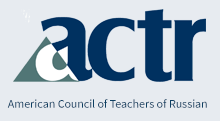Russian Language Journal
Keywords
Wikipedia, racial bias, minority representation, Slavic, East European, and Eurasian Studies
Abstract
Over the last decade, minority representation has emerged as a subject of critical self-reflection in the field of Slavic, East European, and Eurasian Studies (SEEES), prompting discussions that have centered on both the limited participation of minority populations within the community of SEEES scholars and students and the relative lack of attention that minority communities receive in SEEES teaching and research. Efforts to grapple with both issues became more urgent in the aftermath of George Floyd’s murder and the massive protests for racial justice throughout the United States and beyond. Major centers for SEEES teaching and research have organized well-attended online panel discussions and lecture series that address minority and especially racial issues in the context of the discipline. The American Association for Teachers of Slavic and East European Languages (AATSEEL) has issued a statement that underscores “the need for diversity, equity, and inclusion in our profession” and has formed the Working Group on Diversity and Inclusion (AWGDI) to discuss “transforming our curricula, revisiting our teaching practices, revising our programming, and ...remaking the canon” (Banerjee and Safran, 2020). On its website, the American Council of Teachers of Russian (ACTR) has launched a page under the title “Resources for Diversity, Inclusion and Equity in the Classroom” with links to ACTR-sponsored panel discussions and webinars that provide suggestions for inclusive instructional practices and incorporating ethnic and racial diversity of content into Russian language programs at the pre-college and post-secondary levels.
Recommended Citation
Trotter, Veronika and Melnyk, Svitlana
(2021)
"Rectifying Wikipedia Racial Bias in a Russian Language Classroom,"
Russian Language Journal: Vol. 71:
Iss.
3, Article 4.
DOI: https://doi.org/10.26067/MWSM-VZ86
Available at:
https://scholarsarchive.byu.edu/rlj/vol71/iss3/4

